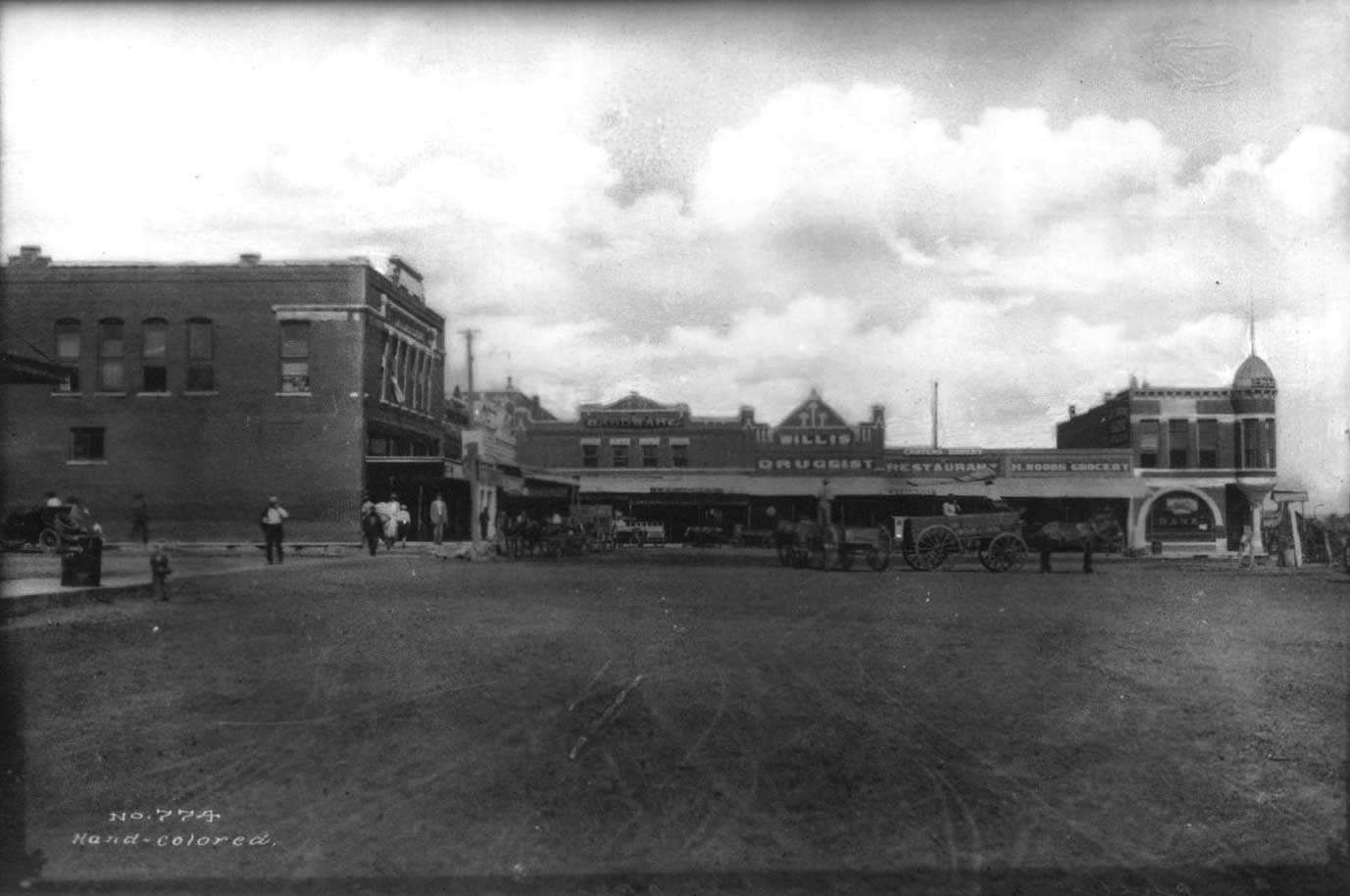MADILL.
Seat of Marshall County, Madill is situated at the junction of U.S. Highway 70, U.S. Highway 177/State Highway 199, and U.S. Highway 377/State Highway 99, twenty-five miles southeast of Ardmore and some seventeen miles north of the Red River. Marshall County is in south-central Oklahoma and borders the Red and Washita rivers. The area formerly lay within Pickens County of the Chickasaw Nation, Indian Territory. William N. Taliaferro, Madill's founder, came from Texas into Pickens County in 1886. He cultivated a six-hundred-acre farm and operated extensive ranches near Oakland.
In 1900 Taliaferro's lands became the Madill townsite. Madill was located along the St. Louis and San Francisco Railway (Frisco) and named for a Frisco official, Judge George A. Madill of St. Louis, Missouri. Until then, Oakland, located two miles northwest of Madill, had been the area's main town. The railroad assured Madill's growth and Oakland's decline. The Madill post office was established on April 29, 1901, and the city charter was issued on September 12, 1902.
In addition to its prime location, Madill lay within a rich agricultural region. Farming and ranching became the town's principal industries and provided a sound economic base. Fertile country, good transportation, and enterprising residents contributed to the community's success. In 1903 the Madill public schools began in a four-room, frame building in the south part of town.
Early Madill was known for a nearby mineral springs and an oil seep north of town. The Arbuckle oil field was brought into existence in 1904, and it boomed again in 1924. In 1939 the Pure Oil Company drilled a well east of Madill near Cumberland. By 1940 quarters were built for the company employees at Pure Camp. A tornado destroyed much of the site on April 2, 1957, with two people killed. The camp closed in July 1959.
Farsighted planning led to the completion of the Denison Dam in 1944, which formed Lake Texoma. Since then Marshall County has enjoyed a large tourist trade due to the many miles of lake shoreline. Each June Madill hosts the National Sand Bass Festival. The annual event originated in 1963. The week-long affair offers fishing, carnival rides, musical entertainment, and arts and crafts.
The Madill Garment Manufacturing Company, makers of men's dress pants, brought industry to town in 1953. In 1960 Harold G. (Doc) Watkins started W-W Trailers, and Clinton Williams formed the Texoma Peanut Company in 1961. Other industries that followed included S and H Trailers, CM Trailers, and Oklahoma Steel and Wire Company. The latest industry established at Madill was Elliott Homes, Incorporated, in 1994.
Madill had 1,587 residents in 1907. It boomed to 2,717 in 1920, dropped to 2,594 in 1940, and reached 3,173 in 1980. The census recorded 3,410 in 2000 and a peak of 3,770 in 2010. The U.S. Census reported a population of 3,905 in April 2020. Madill was the home of Oklahoma Gov. Raymond D. Gary. Community properties listed in the National Register of Historic Places are the Marshall County Courthouse (NR 84003154) and the Worth Hotel (Plaza Professional Building, NR 85000846). The town's newspaper, the Madill Record, began as the Oakland News in 1895.
See Also
Learn More
Madill City Library Committee, Memories of Marshall County, Oklahoma: Then and Now (Dallas, Tex.: Curtis Media Corp., 1988).
Madill (Oklahoma) Record, Historical Edition, 11 September 1952.
"Madill," Vertical File, Research Division, Oklahoma Historical Society, Oklahoma City.
Related Resources
Citation
The following (as per The Chicago Manual of Style, 17th edition) is the preferred citation for articles:
Marshall County Genealogy and Historical Society, “Madill,” The Encyclopedia of Oklahoma History and Culture, https://www.okhistory.org/publications/enc/entry?entry=MA004.
Published January 15, 2010
Last updated February 7, 2024
© Oklahoma Historical Society


